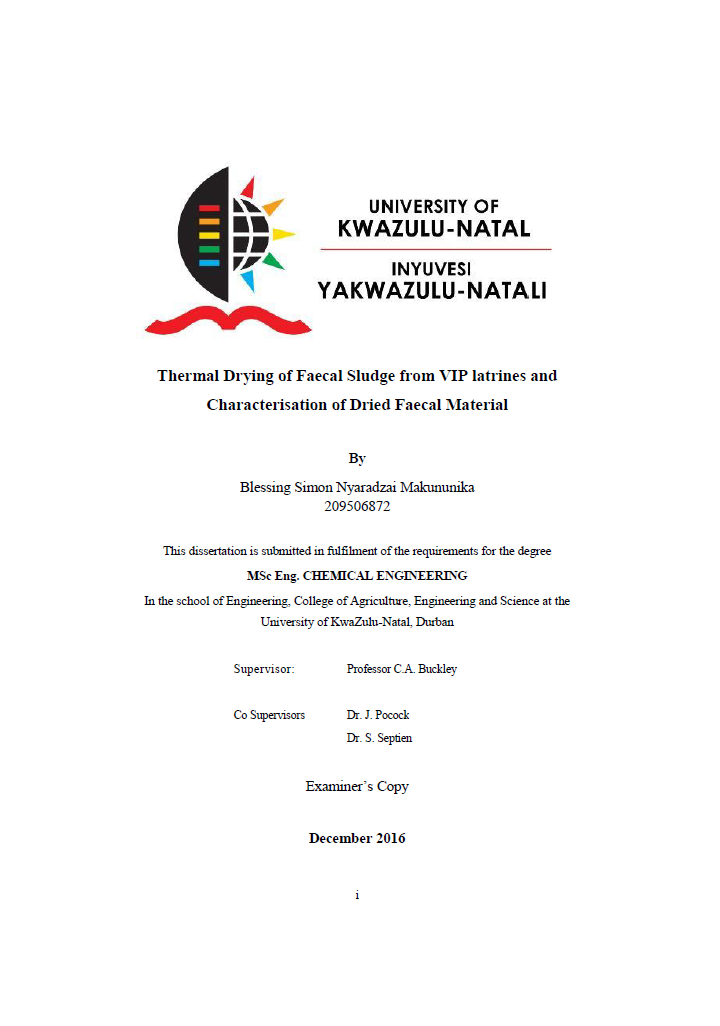Thermal Drying of Faecal Sludge from VIP latrines and Characterisation of Dried Faecal Material Master thesis from the Pollution Research Group, at the University of KwaZulu-Natal (Durban, South Africa) Makununika, B.S.N (2016)
Bibliographic information
Makununika, B.S.N (2016). Thermal Drying of Faecal Sludge from VIP latrines and Characterisation of Dried Faecal Material Master thesis from the Pollution Research Group, at the University of KwaZulu-Natal (Durban, South Africa)
Filter / Tags
Faecal sludge treatment processesFaeces or faecal sludgeCase studies in other formatsEnglish
Downloads

Published in: 2016
Pages: 108
Publisher:
Author(s):
Makununika, B.S.N
Uploaded by:
UKZN
University of KwaZulu-Natal
Location of library entry:
